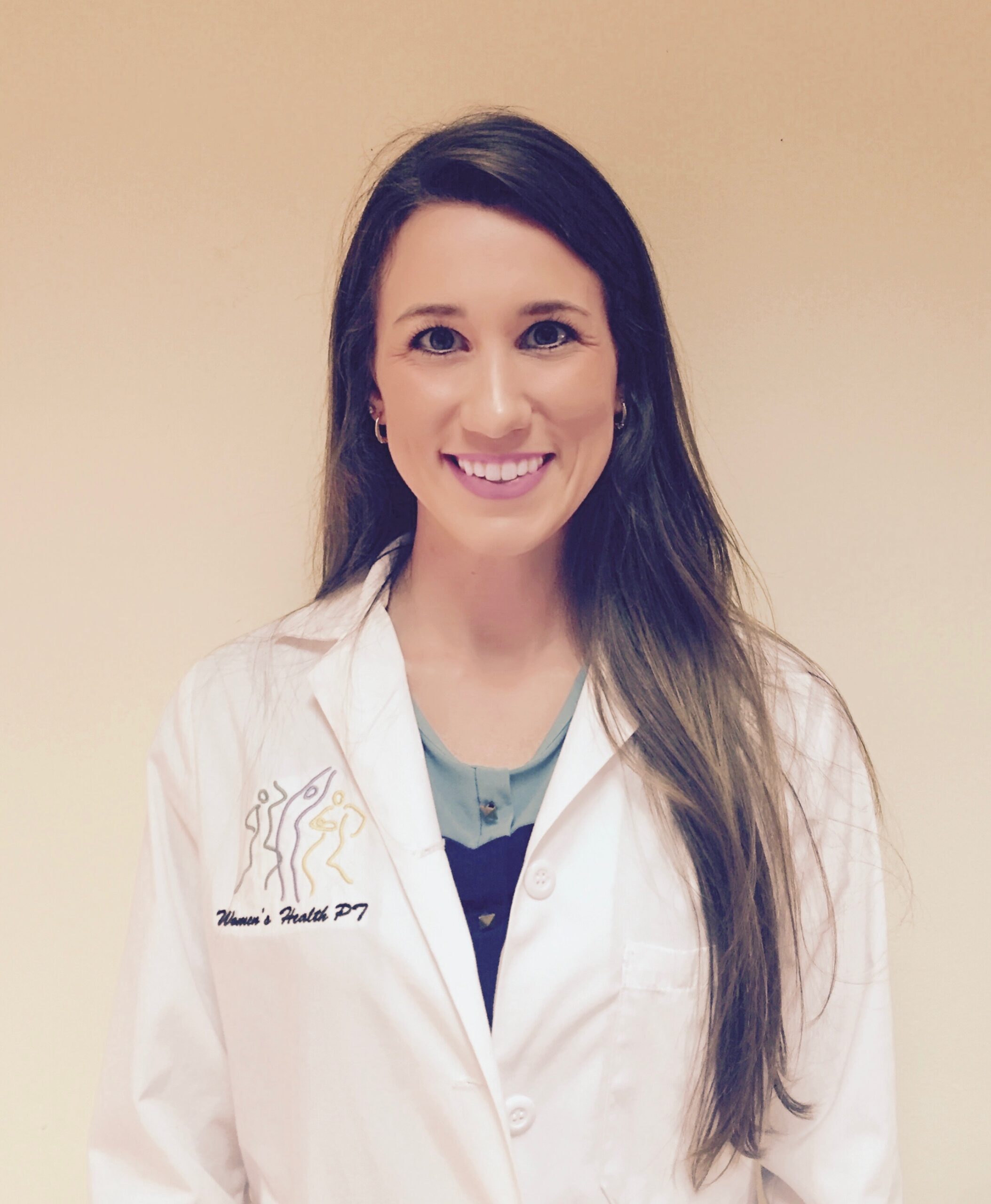Once she graduates with her Doctor of Physical Therapy (DPT) degree in May, Joanna Bierlein’s five-year plan includes developing a mother/infant program, educating both health professionals and women about the potential for improved maternal recovery that simultaneously optimizes the infant’s developmental years.

Now in her third year at Murphy Deming College of Health Sciences, she is working at Women’s Health Physical Therapy and Men’s Pelvic Health Clinic in Richmond, an specialty outpatient Physical Therapy (PT) facility that treats pelvic health.
“Not only has this clinical rotation taken the exceptional learning experiences provided by Murphy Deming out of the classroom and into the real-world clinic atmosphere, but this experience has also challenged every aspect of my comfort level as a future PT,” Bierlein said. “I have utilized aspects spanning the major treatment areas of musculoskeletal, neurological, cardiovascular, and integumentary care. However, I have also had opportunities to take my learning to the next level, in some of the most physically and emotionally tolling diagnoses. The scope of physical therapy and what it can do to improve people’s lives makes me realize how truly blessed I am to be in this profession.”
Although all students have clinical experiences throughout their first two years of graduate school, occupational therapy (OT) and PT students at Murphy Deming experience their most intense rotations in clinics, hospitals, and treatment centers in their third and final year of study.
For PT students, internships are threaded throughout the curriculum and culminate in two rotations during the third year, according to Kai Kennedy, director of clinical education for the PT program.
These courses are designed to allow students the opportunity to demonstrate competence in physical therapy evaluation and treatment, applying sound scientific rationale and incorporating clinical reasoning and decision-making skills in all aspects of physical therapy care. Students may affiliate in any PT setting depending on availability of sites and student interest. The charter class has chosen settings from aquatic therapy to sports medicine to neurologic rehabilitation, and placements are across the country from Spokane, Washington, to El Paso, Texas, to Virginia Beach.
“During those internships, students are also completing the final two of a four-course doctoral project series,” Kennedy said. “Each PT student is required to undertake and complete an original project and present it in a professional poster at the end of our program.”

For OT students, the first portion of the final year is divided into two terms — each lasting 12 weeks — and designed to prepare students for entry-level practice. During these fieldwork experiences, students work in a wide range of healthcare settings from pediatric clinics to industrial work rehabilitation centers. Working under the supervision of a licensed OT, students work with clients, participate in team meetings, and collaborate with doctors or other healthcare professionals. They start out observing, but eventually transition to taking on a full caseload, according to Allison Ellington, director of clinical education for the OT program.
For third-year occupational therapy student Amy Lehman, the fieldwork experience is where her classroom studies “came to life.” So far she has worked in inpatient rehab in Reno, Nevada, and is now placed at LifeCare Center, a skilled nursing facility in New Market.
“Fieldwork has allowed me to grow clinically and build upon what I learned about in the classroom” Lehman said. “It is preparing me for the future because I am gaining real-life skills and the confidence necessary to grow as an OT. I now know that I have the entry-level skills necessary to provide appropriate patient care, and I have been given opportunities to explore different treatment approaches. Nothing compares to the experience of being part of a patient’s journey from evaluation to discharge. It is extremely fulfilling.”
After completion of their two 12-week sessions, OT students take part in a 16-week doctoral experience that often allows them to practice in specialized, non-traditional, or emerging area of practice. It allows students, who now have a firm grasp of clinical skills, the chance to explore other aspects of the profession, such as education and advocacy opportunities.
“The doctoral experience is a more project-based, advanced-skills opportunity,” Ellington said. “It allows students to pick a niche area and have a really in-depth learning experience. It doesn’t just have to be OT practice skills anymore. If a student wants some experience in education or in advocacy, agency, or nonprofit work, they can choose that in their doctoral experience.”
The OTD at Murphy Deming is the first in Virginia, so this doctoral experience is new to most clinicians in the Commonwealth.
“I’ve not only learned how to implement my skills as an OT but I’ve learned a great deal about myself and the type and caliber of OT I aim to be,” said Suzanne Diesel-Malazita, who is working in an outpatient neurological unit at Brooks Rehabilitation in Jacksonville, Florida. “Clinical experiences have highlighted my strengths while also shedding light on the weaknesses I’ll have to address as I continue forward in my career.”
With Commencement just around the corner, both OT and PT students are laying the groundwork — and fervor — that will prepare them for a successful future.
“This clinical experience has been a challenging, at times overwhelming, but a beautiful one,” Bierlein said, “one that has prepared me for future clinical work with a passion more than I could have ever imagined for myself.”